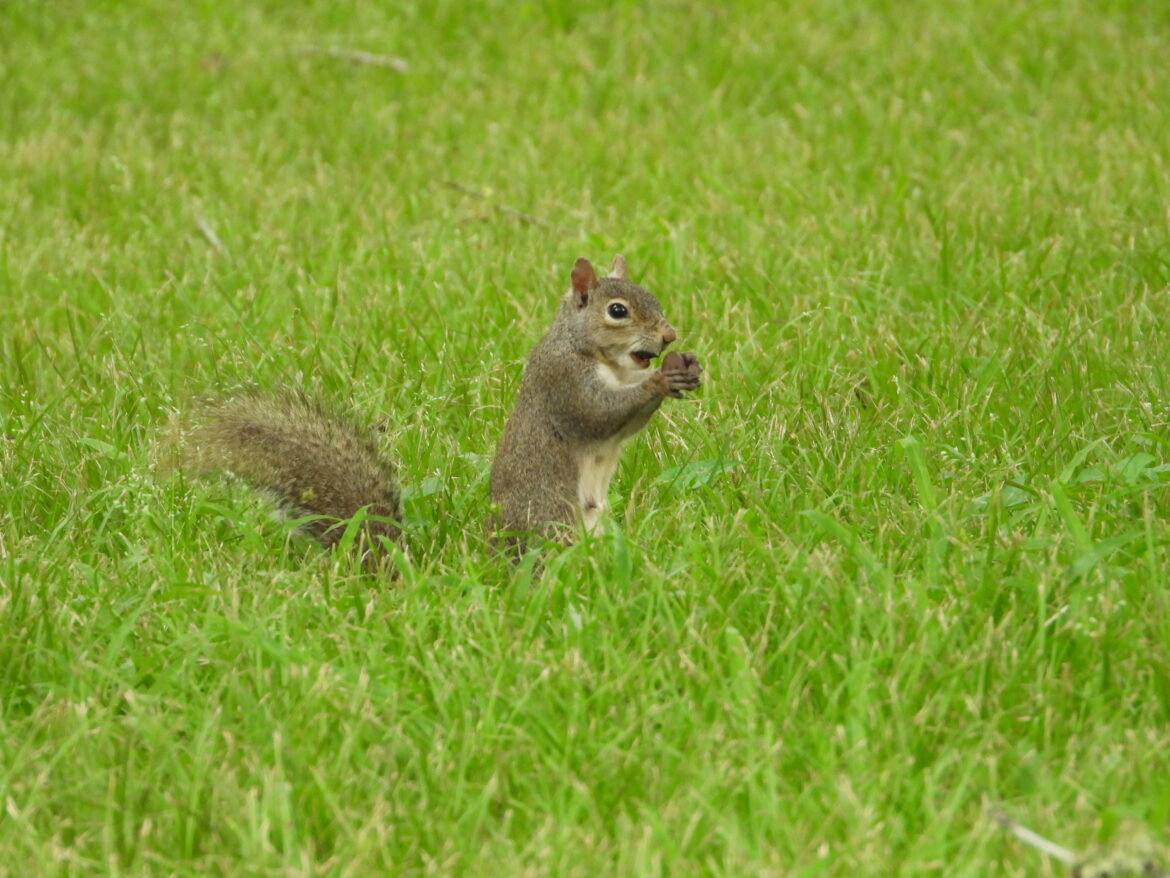By Celeste Silling
One of the animals we see most often in cities and towns here in Texas is the squirrel. While many people regard squirrels as pests, many others, especially children, enjoy seeing the fluffy little mammals running across their yards. In a rural environment where many creatures would struggle to make a home, it can be encouraging to see squirrels thriving.
There are eight different species of squirrels here in Texas, including the Eastern Gray Squirrel, Eastern Fox Squirrel, and Southern Flying Squirrel. The most common in this area is the Gray Squirrel. This is a small squirrel that prefers habitat near water or in dense forests. It is easily spooked and very fast. They have brown-gray fur above and white-gray fur below.
Another common squirrel species here is the Fox Squirrel. The Fox Squirrel is larger than the Gray Squirrel and has brown-gray hair above and red-yellow fur below, with a cinnamon brown tail. This species prefers forested areas or parks with little underbrush. They eat acorns, other nuts, insects, mushrooms and parts of plants.
Perhaps the most unique and amazing squirrel in our area is the Southern Flying Squirrel. This is a nocturnal species, so is rarely seen during the day. It is able to glide down from high places using the wing-like flaps of skin between its front and hind legs to catch the air. It uses its tail to shift in the air and steer it in the right direction. Using this method, the Eastern Flying Squirrel can glide up to 90 feet!
All three of the above-mentioned squirrels will sleep in tree hollows if they’re available, and will raise their babies in nests called dreys. Dreys look similar to birds’ nests. They are a mass of moss, sticks, and other readily available vegetation that is lodged up in the branches of a tree. Looking up from the ground, it can be difficult to tell if a mass of sticks is a bird’s nest, a squirrel’s drey, or just a bunch of leaves. But dreys tend to be larger than the average bird’s nest, and perhaps a little messier.
Acorns, nuts, and other seeds are important food sources for all three of these squirrel species. And the squirrels play an important roll for these seeds as well. Squirrels will consume some seeds when they find them, but they will also stow some away for the winter. They will bring them to their nest or tree hollow, or they will hide them somewhere. Hiding them usually entails burying the seeds underground. This habit is called seed-caching.
By seed-caching, squirrels regularly plant seeds, leading to tree growth and forest regeneration. In fact, the Eastern Gray Squirrel is regarded as one of the most prodigious natural forest regenerators in America! These little mammals do a great service for forest habitats and the other animals that live in them.
Of course, those of us in rural areas don’t always see squirrels as an ecological necessity. They’re better known for raiding our bird feeders! But in a way, its heartening to see a wild animal, who naturally belongs in the forest, adapting to city life. Human development sadly strips away the habitats of many species, so I can’t be irritated with the squirrels for persevering against the odds. Squirrels are an important part of our ecosystem, and a great example of rural wildlife.
Photo by Celeste Silling
Caption: An Eastern Gray Squirrel eating a nut.

